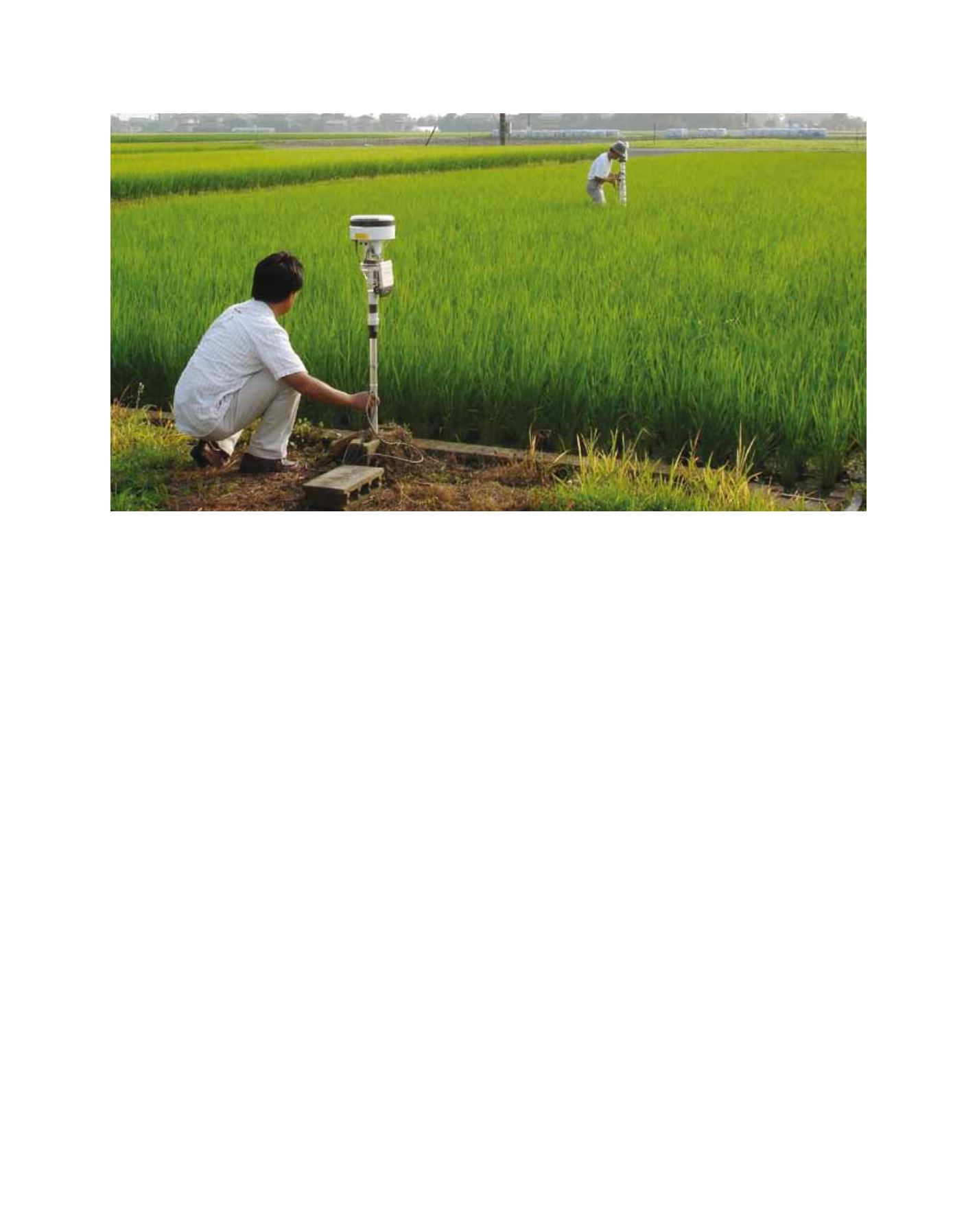

[
] 240
C
ommunities
disaster adaptations addressing global warming and
climate change impacts. Presenting scenarios based
on quantitative simulation assessments contributes to
adaptation measures for the heat island phenomenon
and the downpours.
Dr. Satoru Iizuka of Nagoya University is develop-
ing a new sophisticated downscaling model that is
capable of analysing weather and climate from regional/
urban scales to building scale. He performs sensitivity
analyses, impact evaluations and future projections of
urban heat islands, extremely hot days and downpours
using this model. He examines how to plan adaptation
to these environmental problems in his subject areas,
Nagoya city and Tajimi city.
Professor Seigo Nasu of the Kochi University of
Technology aims to develop an integrated simulation
model for natural and social phenomena such as the
water cycle, use and environment, which considers the
effects of climate change. The target is to offer quan-
titative information which contributes to adaptation
measures for changing water resource management
in Shikoku region, which includes four prefectures
and the Yoshino River. Having discussed the project
with hundreds of ordinary citizens and the other local
stakeholders, he has already accomplished a ‘civic-
conscious structure logic model’ which can assess
climate change impacts on the socio-economy and
civic-consciousness, and improved the model by inte-
grating the other economic impact assessment model.
Professor Teruyuki Nakajima of the University of
Tokyo is developing a system to estimate the source
and generation of carbon dioxide and air pollutants. It
is implemented over the next-generation global atmos-
Japan side areas in Toyama Prefecture, which has experienced signif-
icant warming impacts.
Dr Tomohito Yamada of Hokkaido University aims to develop
downscaling methods for flood control and water utilization, and
to develop software to refer hydrological and weather informa-
tion obtained through the project for climate change adaptation
measures. His subject area is the northernmost prefecture in Japan,
Hokkaido, where water resource may be drastically changed, such
as a decrease in snowfall or of the melting season.
Dr Motoki Nishimori of the National Institute for Agro-
Environmental Sciences integrally implements statistical
downscaling and developments of simulation technologies for
climate change adaptations. These are essential for planning stra-
tegic adaptation estimations for climate change and environmental
policies in his subject area, Kochi Prefecture, which has complex
topography and various land use.
Research sub-programmes – urban area
Dr Koji Dairaku of the National Research Institute for Earth Science
and Disaster Prevention focuses on research and development of
a simulation technique which provides scientific knowledge for
local adaptation planning and reviewing. The target is the Tokyo
metropolitan area, and the goal is to enable adaptation to low-carbon
society and climate change. Dr Dairaku digitalized the Regional
Planning Atlas, which covered the most of his target area since 1888,
and developed a data set from floods damage statistics (1961-2008)
for flood risk assessment. This enabled him to quantify deforesta-
tion and urban area expansion and calculate flood information in
the Tokyo metropolitan area.
Dr Keiko Takahashi of JAMSTEC is developing a detailed model
which duplicates and predicts the effects of heat islands, local
downpour in urban areas and inland floods in her subject areas,
the Tokyo metropolitan area and Kawasaki city. The model is for
Ground monitoring by Prof. Ninomiya’s sub-programme to validate the accuracy of their models
Image: RECCA
















